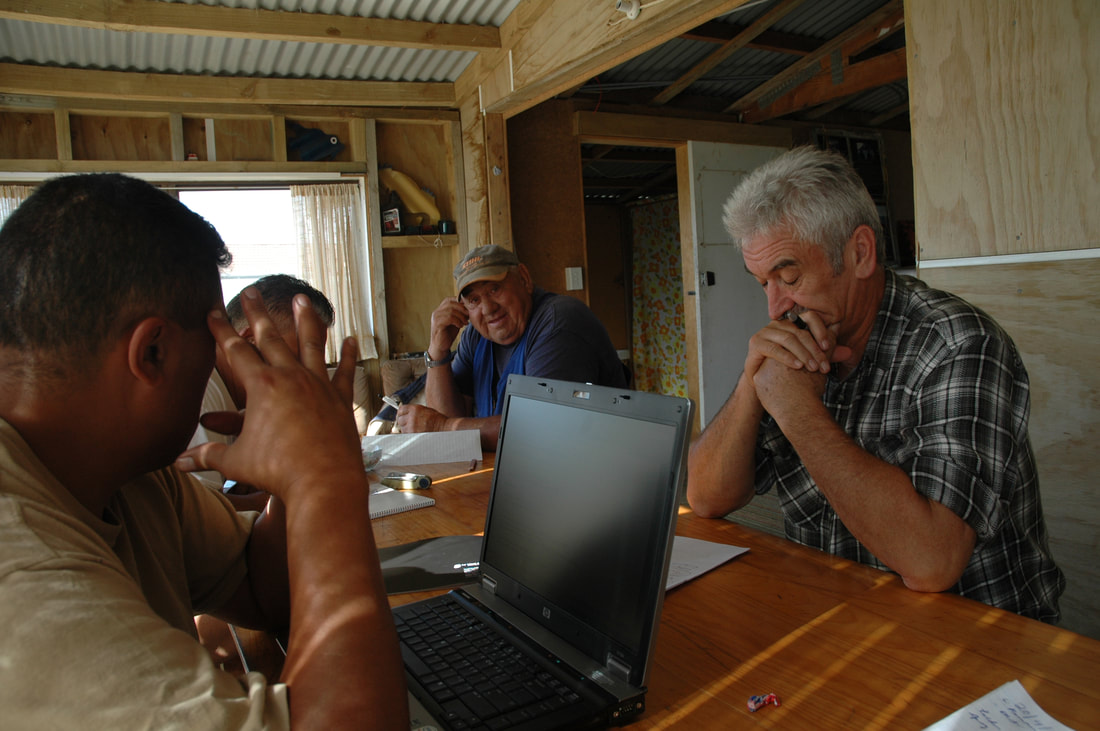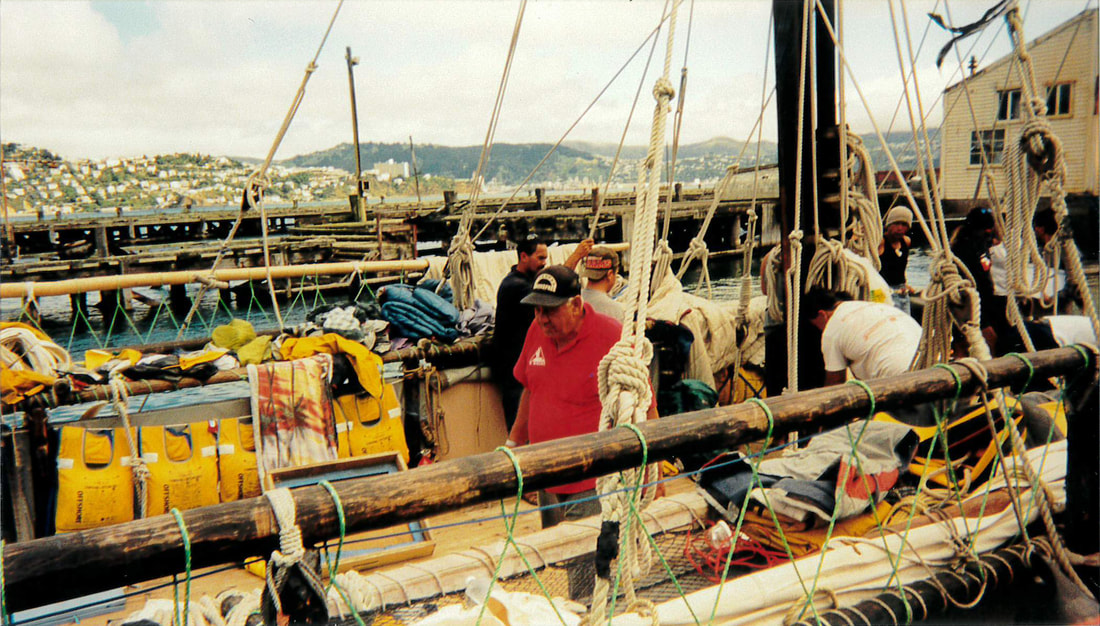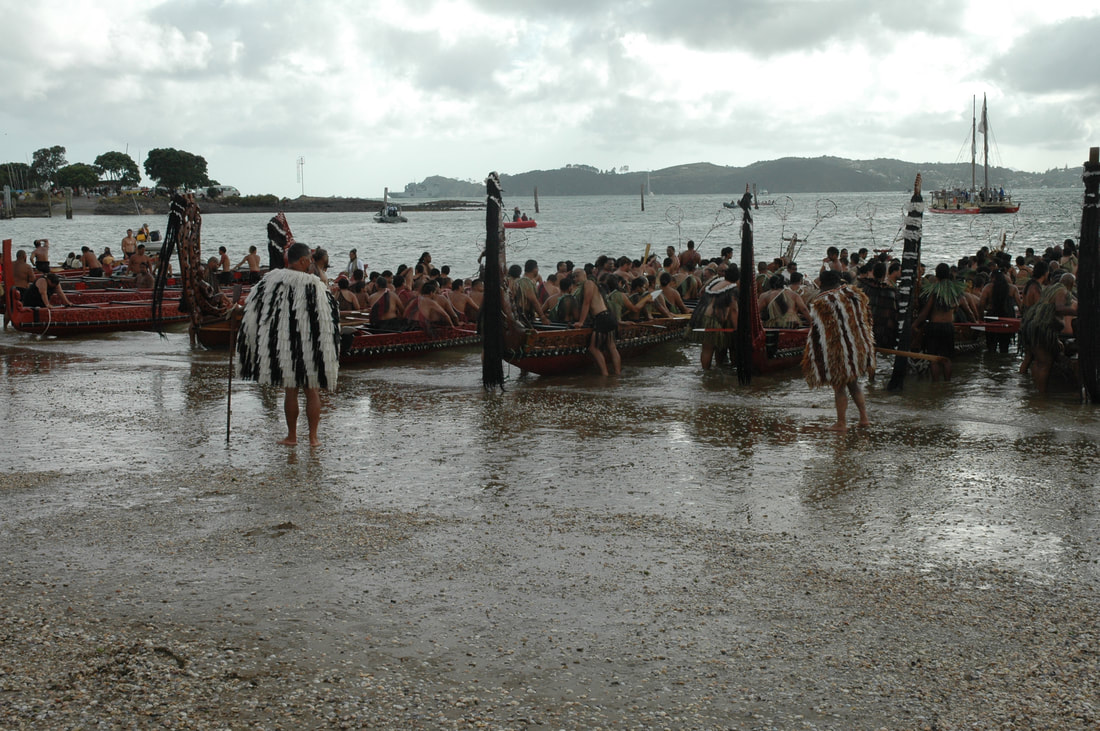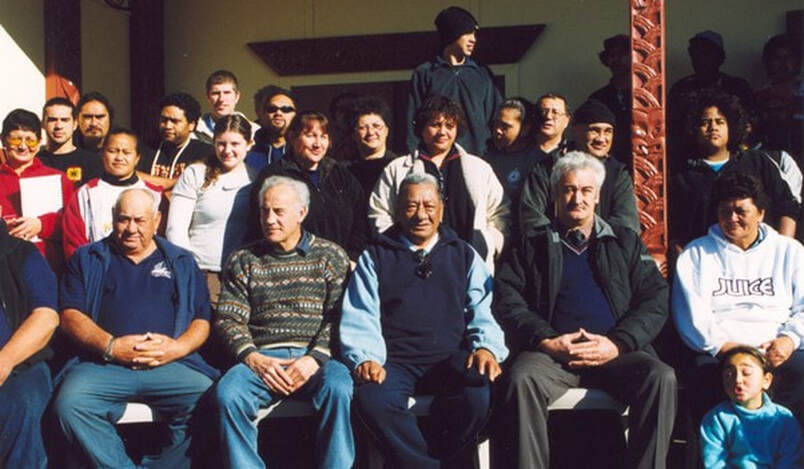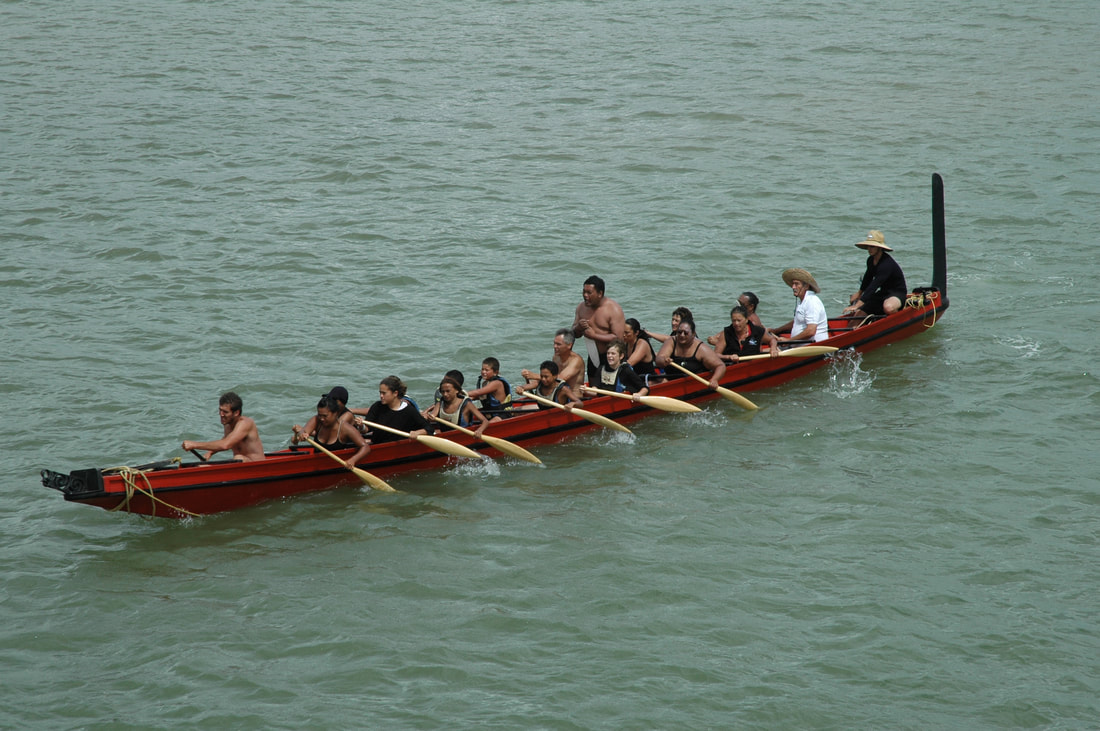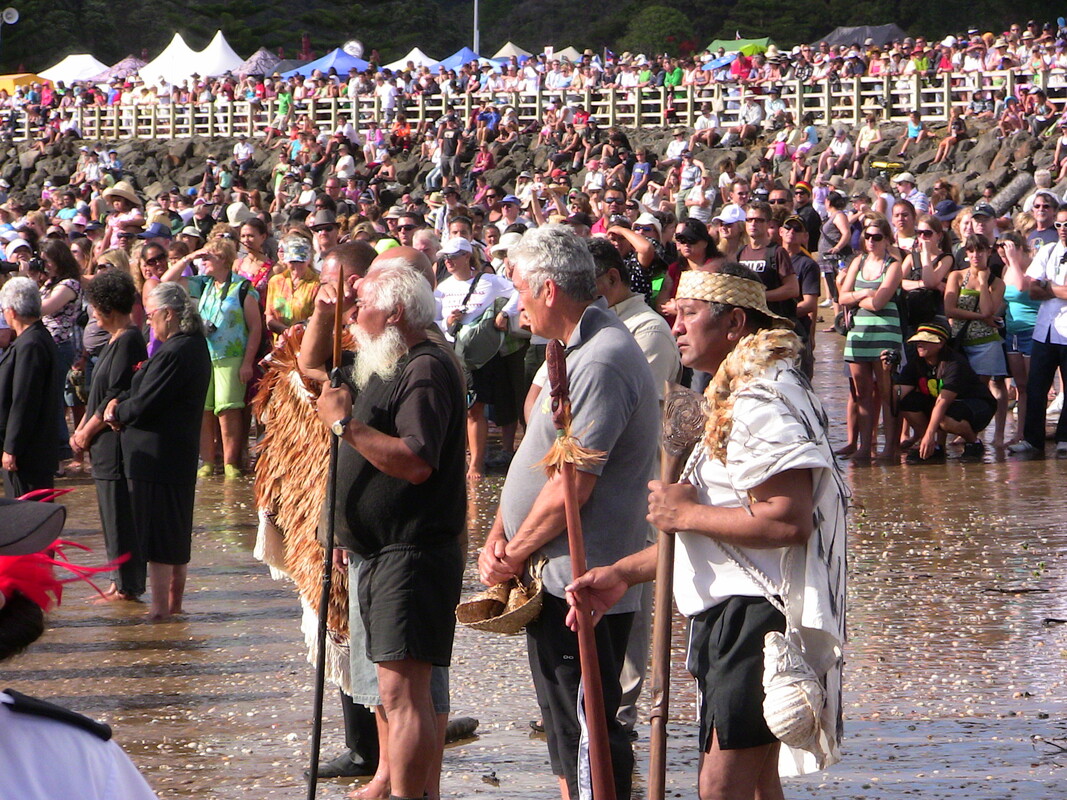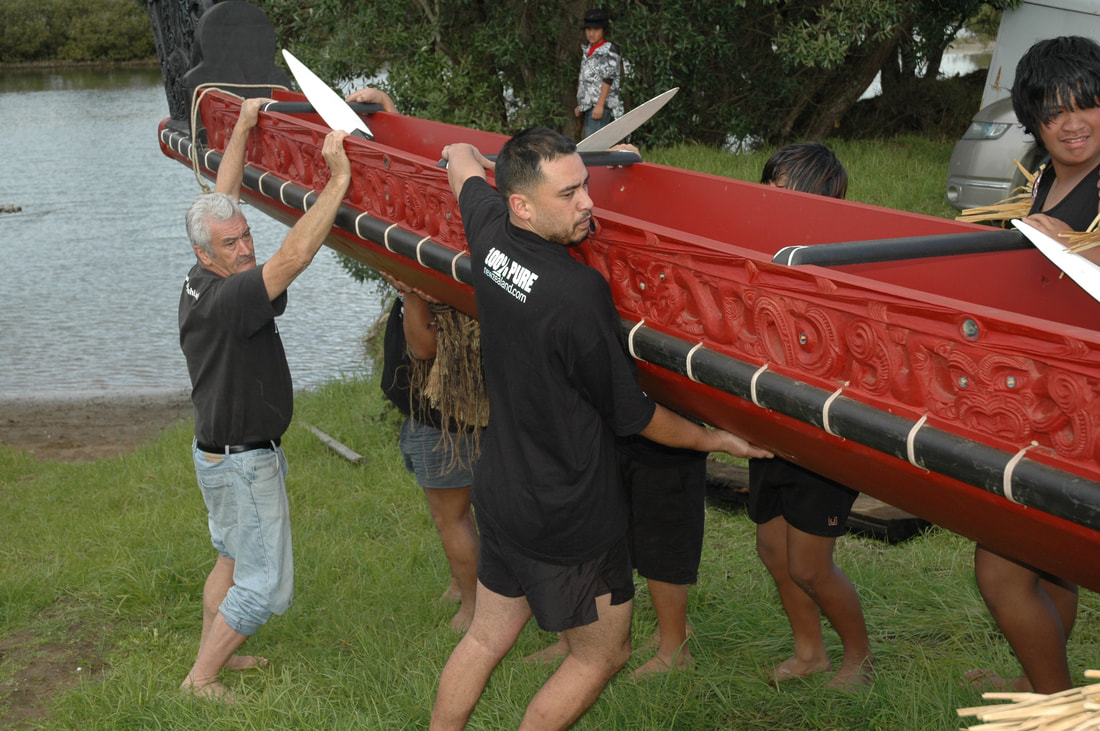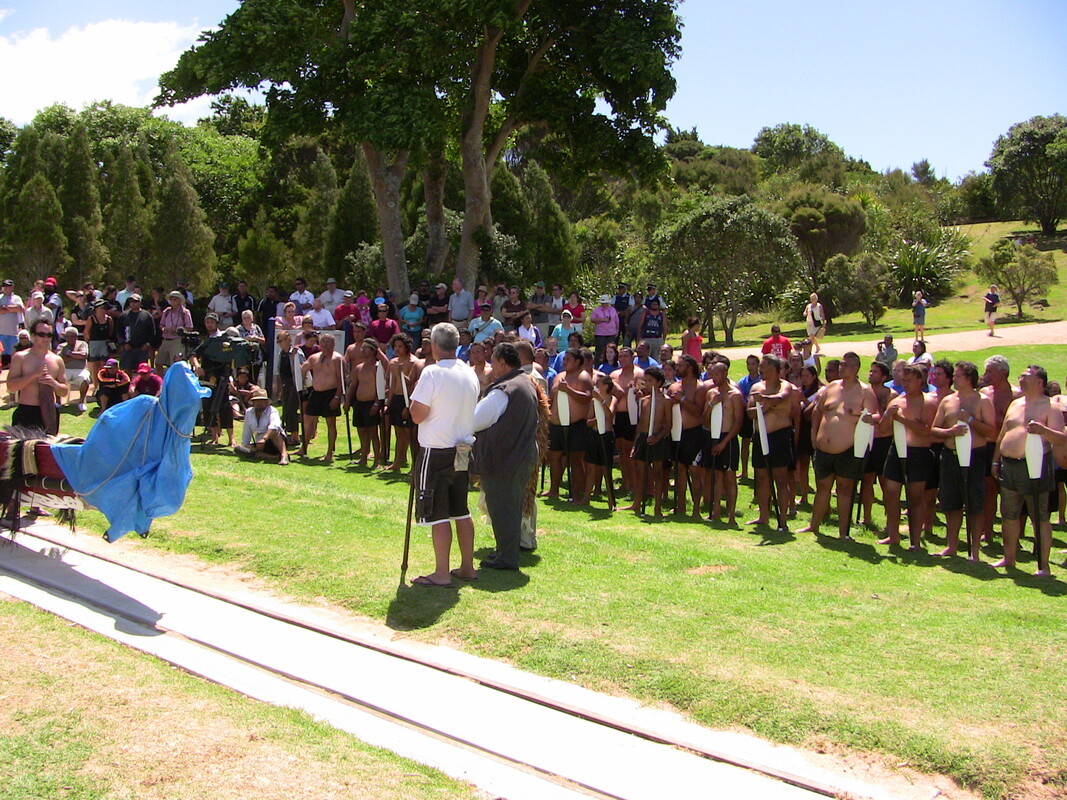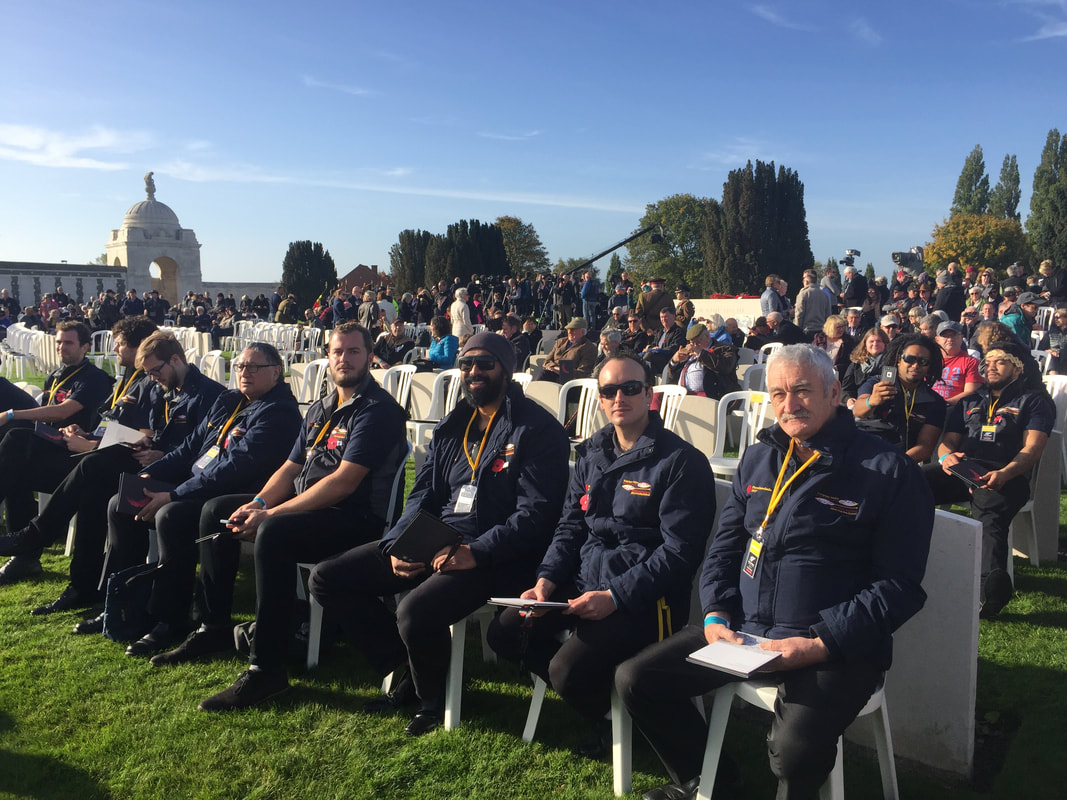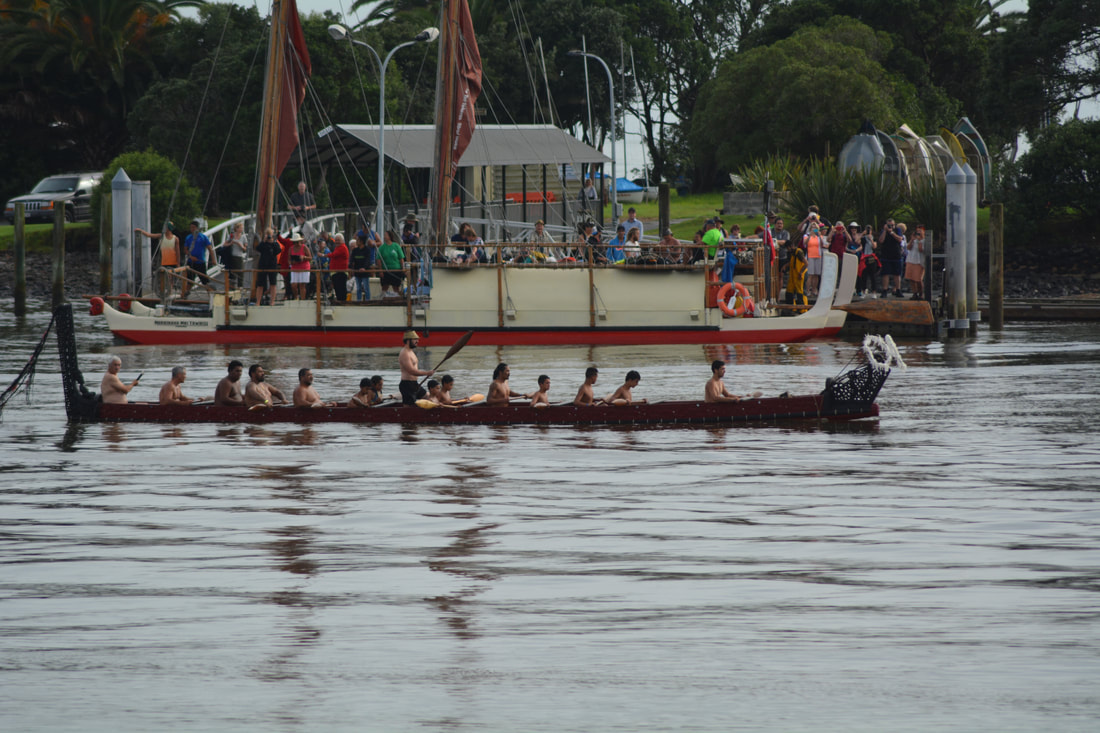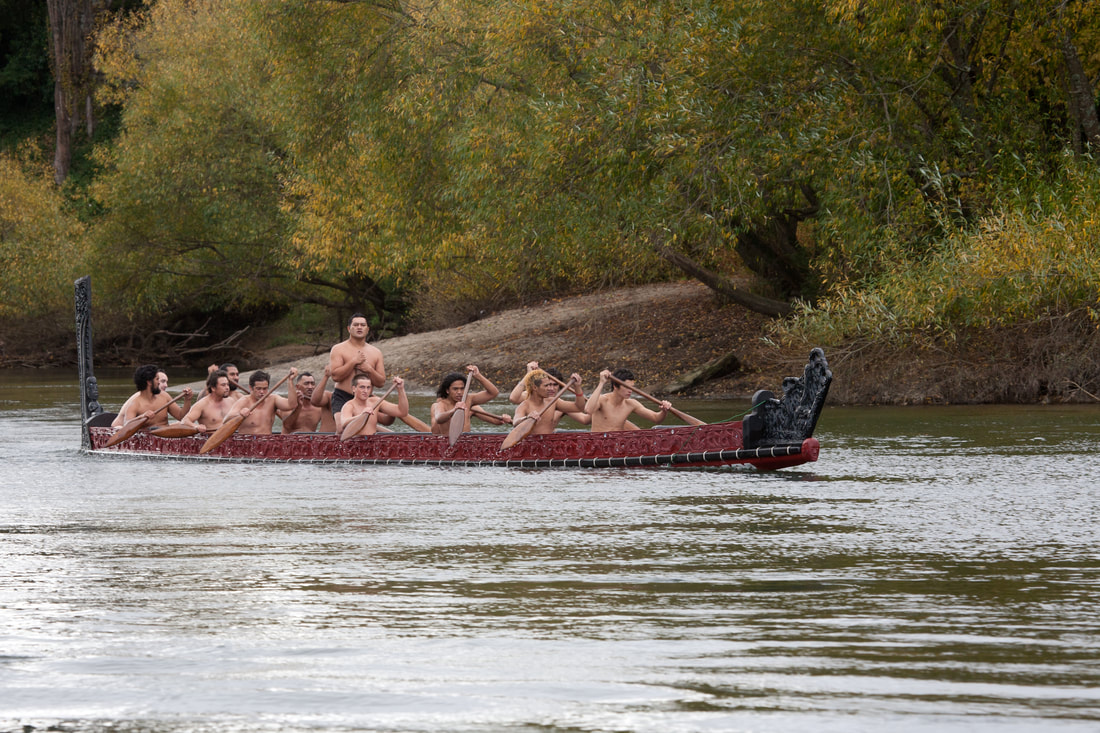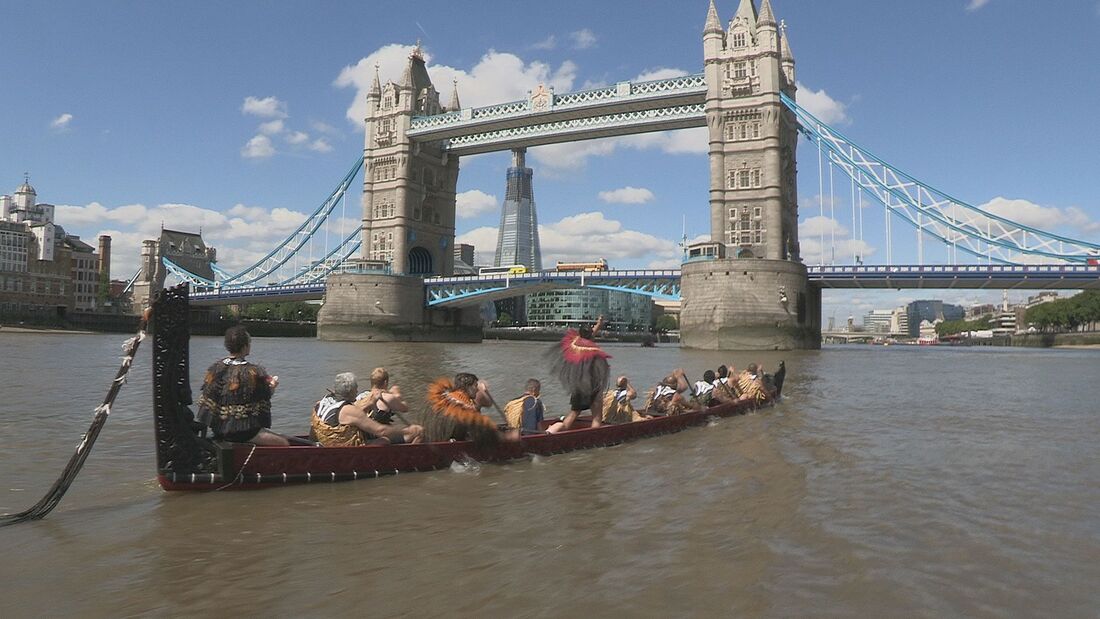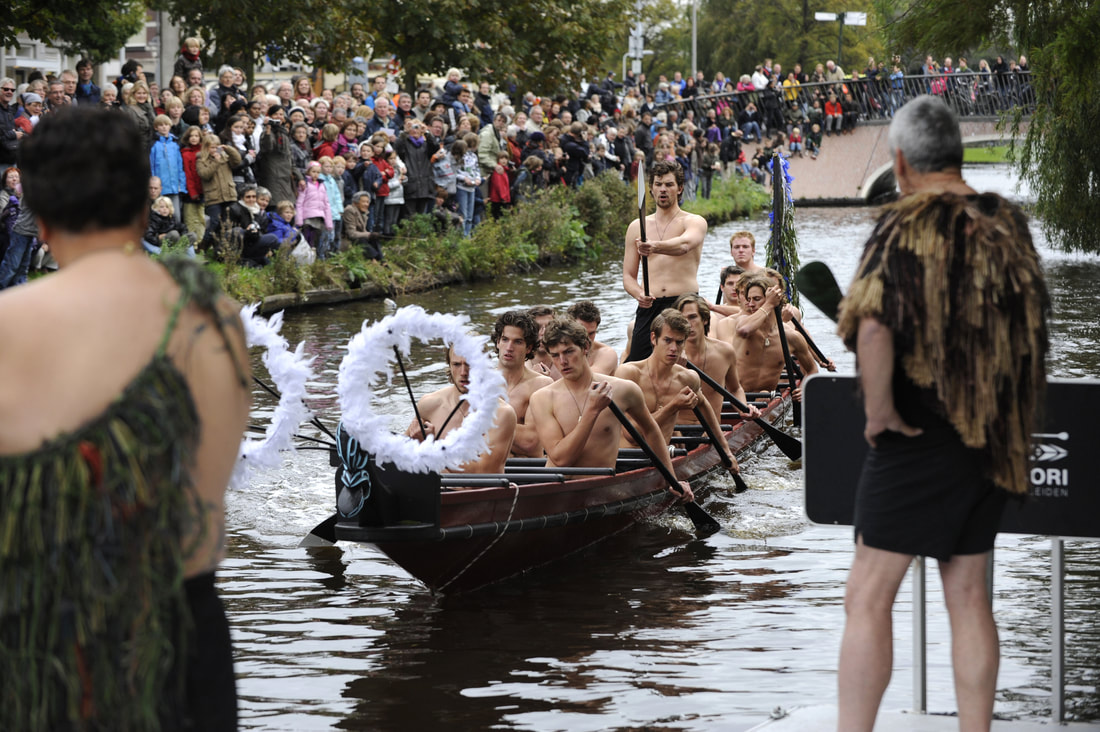HE KAUPAPA WAKA
|
Robert Gabel
Chair of Ngā Waka Federation He Kaupapa Waka is a term to describe the many dimensions of waka practice, which encompass and reflect all aspects of Te Ao Māori. For instance, Kaupapa Waka is founded on the tikanga and mātauranga specific to waka and involves all Māori cultural practices and art forms. The waka hourua connects us to our Pacific forebears, and the return of waka hourua voyaging in Aotearoa in the late twentieth century resulted in the revival of knowledge of traditional navigation by the stars and elements, including birds and mammals. The waka taua carries the mana of its iwi, leaders and people. Elaborated carved, the original purpose of the waka taua was to take warriors to battle. Nowadays, the waka taua is used in significant ceremonial occasions to showcase the mana of the iwi. While encompassing many aspects of waka tikanga, waka ama is a paddling sport focused on participation by all members of the whānau. It has become one of the fastest-growing sports in Aotearoa, has participant nations throughout the Pacific and is expanding worldwide. I believe a national organisation such as Toi Māori Aotearoa, and regional waka groups provide crucial infrastructure to assist and support the various waka groups that practice Kaupapa Waka in Aotearoa, as many waka groups lack the formal structures required to access help when needed. Hekenukumai Busby (centre) and Robert Gabel (right) discussing the building of a waka for Europe, Aurere, 2010
My involvement in waka began with the arrival of the Hawaiian waka hourua, Hokule’a, at Waitangi in 1985. While inspecting the waka hourua at Waitangi marae, I met Hekenukumai Busby by chance, and we shared a strong interest and appreciation for the achievements of the Hokule’a crew. A short while later, Hekenukumai asked me to assist with administering waka projects in which he was involved. Then he included me in kaihoe training and navigation wānanga, which culminated in being selected to be a crew member on later voyages overseas.
Waitangi Waka Pageant, Te Tii Beach, Waitangi, 6 February 1990. Photographer: Garry Nicholas
The first of these projects was the construction of the waka taua, Mātaatua Puhi, for the 1990 Waka Pageant as part of the 150-year commemoration of the signing of New Zealand’s founding document, the Treaty of Waitangi in 1840. At this event, I observed the absolute splendour of 22 waka lined up on Te Tii Beach, which was a source of pride and a powerful display of the mana of ngā iwi Māori in Aotearoa that instilled in me the significance of waka in Te Ao Māori.
Hekenukumai Busby onboard Te Aurere, Shelly Bay, Wellington, 2000
The commemorations were a catalyst for Hekenukumai to continue building waka for various hapū and waka groups around Aotearoa and Hawaii, such as Te Aurere, the waka hourua that first sailed from Aotearoa to Rarotonga in 1992. The building of Te Aurere and its many voyages inspired the construction of further waka hourua in Aotearoa and, with that, the development and resurgence of waka hourua kaupapa, which includes ocean sailing and traditional navigation without instruments.
Waitangi Waka Pageant, Te Tii Beach, 6 February 2009
Ngā Waka Federation was established in 1990 to retain and preserve waka tikanga and maintain the skills and knowledge recovered for the 1990 waka building project and commemorative pageant. Those practices had lay dormant for many iwi for over a hundred years though maintained in Te Tai Tokerau and the Waikato. Hohepa Mason of Ngāti Awa was the inaugural Chairman of Ngā Waka Federation, and the other founding members were Toko Te Kani of Ngāti Porou, Tepene Mamaku of Ngāti Awa and Hekenukumai Puhipi of Ngāti Kahu.
Ngā Waka Federation continues to support the annual waka pageant at Waitangi on 6 February, and we have seen significant development since 1990. Initially, only the waka taua, Ngātokimatawhaorua—built for the 100-year commemoration of the Treaty of Waitangi in 1940—was present on the water at Te Pēwhairangi Bay. Ngātokomatawhaorua is now accompanied by up to 23 waka including eight waka taua, 14 waka tētē and 2-3 waka hourua. With the inclusion of waka tētē and waka tangata from 2008, women have been allowed to participate as paddlers on Waitangi Day and selected as kaihoe for Ngātokimatawhaorua in 2019. Robert Gabel (second from far right), onboard the waka tētēkura, Te Taki o Autahi, Waitangi Waka Pageant, 2009
The Waitangi Waka Pageant is the premier showcase of waka in Aotearoa and an opportunity for kaihoe to demonstrate waka skills, culture, and kaupapa. The local waka groups prioritise this event in their annual calendar and host the many waka groups from throughout Aotearoa to assemble at Waitangi for training in the days leading up to Waitangi Day—a national public holiday-- with the waka pageant recognised as an event of national significance.
Robert Gabel (centre right), Te Tii Beach, 6 February 2010
From this pageant, kaihoe are selected for crews for international events supported by Toi Maori Aotearoa. These events include Māori Art Meets America in San Francisco (2005), the America’s Cup Yachting Event in Valencia, Spain (2007), the handover of Te Hono ki Aotearoa in the Netherlands (2010), the City of London Festival in England (2011), the Queen’s Jubilee in England (2012) and Frankfurt Book Fair (2013), and the centennial commemoration of the Battle of Passchendaele in Belgium (2017).
l-r: Joe Conrad, Robert Gabel, Tamahou Temara and Stanley Conrad (right), Tent City, Waitangi, 2008
I have served as Chair of Ngā Waka Federation since 1995. I am a strong advocate of Kaupapa Waka, particularly in researching and revitalising mātauranga waka and transferring that knowledge to the younger generation. My on-the-water role is to provide support and guidance to the kaihautū when and if required. Off the water, I select waka crews for various occasions, advise and guide kaihoe in waka tikanga, ensure all tikanga and protocols (including health and safety requirements) are followed and oversee logistics relating to the provision of waka and kaihoe. I also act as a kaitiaki of waka that are part of the Ngā Waka Federation kaupapa, such as Whakaangi (see section below).
Robert Gabel (left), the launch of Te Hono ki Aotearoa at Aurere, 2010
Selecting the kaihautū is a crucial decision. The role of a kaihautū is to lead the crew by example on and off the water. The pertinent characteristics of a kaihautū is to be able to be flexible, consider all relevant factors and make the correct decision accordingly. By consistently making good decisions, the kaihautū will gain the crew's respect, which is imperative.
Robert Gabel (centre left) at the blessing of the waka taua, Whakaangi, Waitangi 2010
When selecting kaihoe, I assess the occasion to be celebrated, consider the matrix of required skills and develop the requisite training programme. Toi Māori Aotearoa events invariably require a strong tikanga base and on-the-water kaihoe experience. The needs of each event may differ; some may be more physically demanding with less of a cultural requirement, while other events foreground cultural artistry and are not as physically demanding. The target areas of training vary depending on the individual skills of each kaihoe and the occasion. However, discipline and teamwork are valuable attributes, and the ability to be a Māori ambassador is essential when representing Toi Maori Aotearoa overseas.
Tynecot Cemetery, Passchendaele, Belgium, 2017
WHAKAANGI
The waka Whakaangi was built at Aurere in 2009 by Hekenukumai Puhipi and Heemi Eruera. The waka was launched at Waitangi on 5 February 2010. The launching protocols were overseen by Pouroto Ngaropo, Tepene Mamaku, Rima Edwards and Hekenukumai Puhipi.
Robert Gabel, Kaiurungi for Whakaangi (far left), Waitangi 2016
The primary activities of Whakaangi are to provide an opportunity for youth to practice Kaupapa Waka at Waitangi Day commemorations and other events where the mana of iwi, hapū and whānau are showcased. The waka has, over the years, participated in many events of regional and national interest, such as the Rugby World Cup, documentary filmmaking, the Taipā bridge opening, training and preparing crew for overseas events such as the handover of Te Hono ki Aotearoa and the Queen’s Jubilee on the River Thames.
Whakaangi, Kaihoe training for the Queens Diamond Jubilee, Waikato River, 2012
The waka Whakaangi was carved from a kauri tree sourced from the Ngaiotonga forest with the agreement of Te Kapotai in the Bay of Islands. Whakaangi is 14 metres long and seats 16 kaihoe together with the Kaihautū. The tauihu features Ngāti Kahu carving designs, and one of only two waka taua with that design, the other being Te Hono ki Aotearoa in the Netherlands. In fact, the waka in the Netherlands is a twin of Whakaangi and both are made from the same kauri tree.
WAKA TAUA ON THE INTERNATIONAL STAGE
Robert Gabel (second from far left) as kaihoe for Te Hono ki Aotearoa, River Thames, Festival of London 2011
Te Hono ki Aotearoa in the Netherlands demonstrates that Kaupapa Waka can be adapted to new horizons without compromising cultural integrity. While Te Hono ki Aotearoa reinforces existing practices, the journey of waka on the world stage has exposed Te Ao Māori—our art, culture and traditions—to the world. This exposure has required us to innovate some customs of waka taua and carefully and constantly review the definitions and functions of waka. But the concept of waka has not changed, and Te Hono ki Aotearoa—the link to Aotearoa—remains strong.
Robert Gabel (right) oversees the handover of Te Hono ki Aotearoa to Dutch kaihoe in 2010, Leiden, The Netherlands
For example, the carvings of the waka include Ngāti Kahu carvings to ensure the waka has a spiritual and physical link to the iwi who presented the waka to the Netherlands. The Māori crews for Te Hono ki Aotearoa comprise kaihoe from all iwi of the motu who participate in the waka pageant. The waka is available to the Dutch crew to use in the Netherlands under strict protocols in accordance with our waka tikanga. We have also assembled crews comprising Māori and Dutch kaihoe for Toi Māori Aotearoa events. Importantly, the annual delegation of Dutch kaihoe at the Waitangi waka pageant plays a crucial role in maintaining our relationships and the well-being of Te Hono ki Aotearoa in The Netherlands.
Prepared by Whatarangi Winiata in 2022
|

